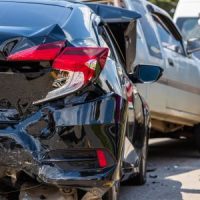Who Is Liable In A Kentucky Rear-And Accident?

Rear-end accidents are quite common in the United States of America. The National Highway Traffic Safety Administration approximates that rear-end accidents account for nearly 30% of all traffic crashes. Unfortunately, when a rear-end accident occurs, it can result in serious injuries or even death. Some common injuries in rear-end collisions include whiplash, dislocated shoulders, herniated discs, cuts and lacerations, fractures, traumatic brain injuries, and crushed limbs. An injury sustained in a rear-end accident can take months to heal. Some injuries are even permanent.
After a Kentucky rear-end accident, one of the most crucial determinations is who is to blame for the accident. A driver who causes a rear-end accident due to negligence can be held liable and made to compensate the other driver for their injuries and damages.
So, who is liable in a Kentucky rear-end accident? It is often assumed that the rear driver is to blame when a rear-end accident occurs. In many cases, it is true that the rear driver is to blame for a rear-end accident. However, there are times when the rear driver is not to blame for a rear-end accident. If you were in a rear-end accident, it is best that you retain a skilled car accident attorney who can help you determine liability.
Situations When the Rear Driver Is To Blame for a Rear-end Accident
As already mentioned, in most rear-end collisions, the driver at the back will usually be at fault for the collision. Often, the rear driver has to pay damages to the lead driver. For example, if a driver fails to maintain a safe following distance, they will likely be held liable if a rear-end accident occurs. Drivers are expected to maintain a safe following distance. The rear driver is also responsible for a rear-end accident if they were;
- Driving too fast for the conditions
- Distracted driving
- Driving while drunk or impaired by a drug
- Driving over the posted speed limit
Such behaviors make it hard for a driver to react on time when the vehicle in front of them comes to a stop.
The Lead Driver Can Also Be at Fault
There are times when the driver in front is to blame, at least partially, when a rear-end accident happens. Drivers traveling in front of other vehicles also have a duty to drive safely, and failure to do so can result in a driver being held liable for a rear-end accident, at least partially. Some of the actions that are considered negligence on the part of the lead driver and that can result in the lead driver being held at least partially liable after a rear-end accident include;
- Stopping suddenly without warning
- Brake checking, which is hitting the brakes for no valid reason
- Suddenly going into reverse
- Driving while distracted
- Driving while drunk or impaired by a drug
- Driving with broken lights
In conclusion, if you were in a rear-end accident, you should know that fault for such an accident can be shared. The rear and the lead driver may both be to blame for the accident. Fortunately, in Kentucky, an injured party who is partially to blame for their rear-end accident can still recover compensation from the other negligent driver. This is because Kentucky follows the comparative negligence rule.
Contact a London Auto Accident Attorney
If you were involved in a rear-end accident in Kentucky and need help determining liability, contact the skilled and dedicated London auto accident lawyers at Cessna & George Law Firm at 606-770-5400.
Source:
nhtsa.gov/sites/nhtsa.gov/files/analyses20of20rear-end20crashes20and20near-crashes20dot20hs2081020846.pdf
